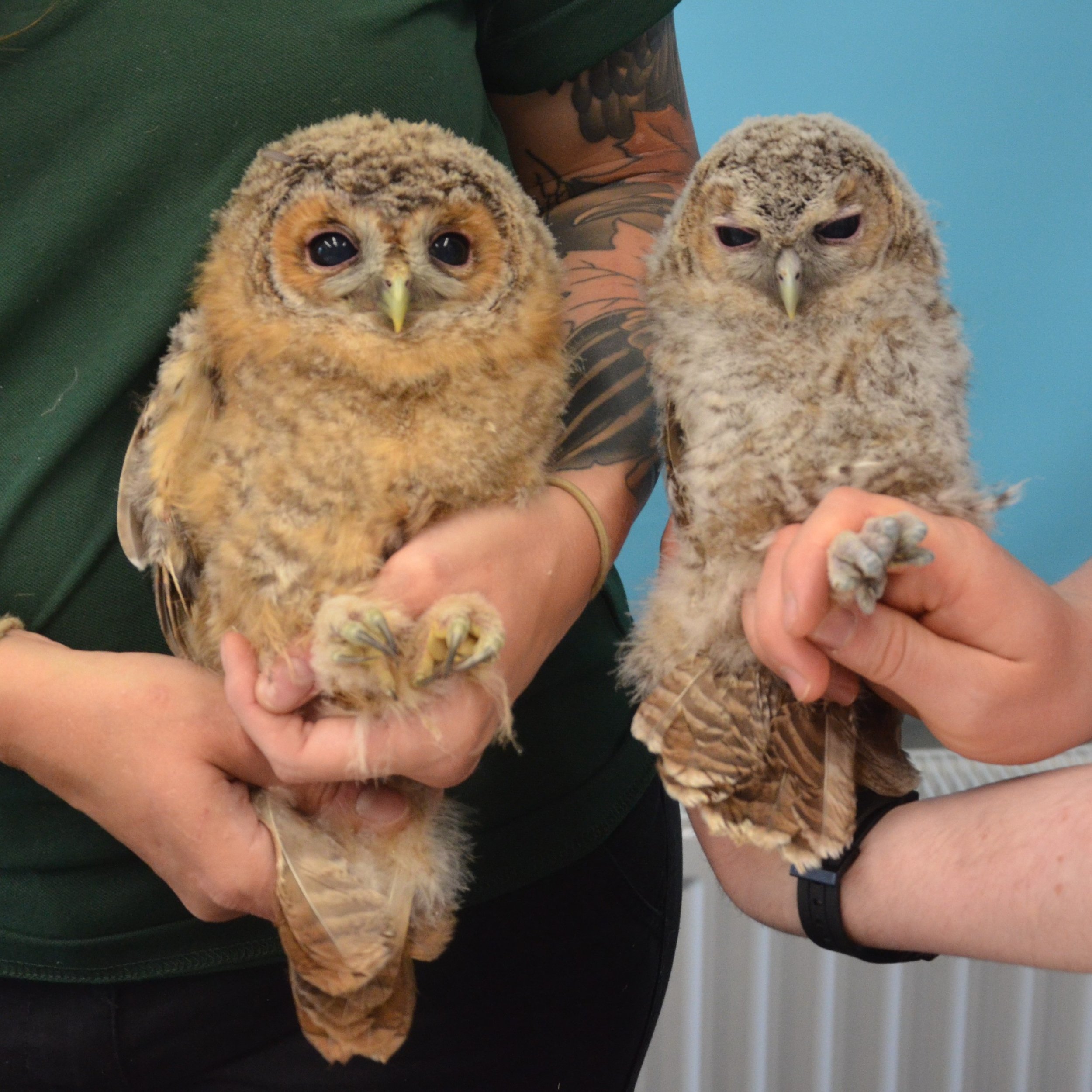We have had a long standing partnership with Broughton Hall Farm near here, and are very thankful to farmer Sam for his efforts to make a living from the land while also making space for wildlife. We have released birds onto his farm in the past, and it was chosen as a suitable release site for two Barn Owlets we’ve been looking after over the past few weeks.
These two have bonded well in our aviaries
Both these young Barn Owls were found outside their separate nests, which is a problem as parent Barn Owls will only feed offspring in the nest. Despite them being returned to the nestboxes, they were soon found on the ground again, which suggests that either the nest had been disturbed by predators, or that the rest of the chicks had fledged and the parents had abandoned the last chicks for some reason.
Neither had any injuries, so were brought to us for some TLC and a few good meals. While they were with us, we asked Dr Hugh Hanmer to ring them, as there is a very good chance that they might be found breeding in a nest box locally next year.
Dr Hugh Hanmer closing a BTO ring around the leg. This is a painless process and is likened to us wearing a watch, but means that this bird is now an individual with a unique code attached to it so it’s life history can be traced should it be found in the future.
Both these Barn Owls still had some feather growth to finish, but now that they are fully feathered and able to fly, they have been moved to the hack pen ready for release.
We will hopefully install a trail cam to monitor how they’re getting on, although with so many hack pens to monitor at the moment, resources are a bit low on the ground. We appreciate that asking our supporters for a £50-60 trail camera is a big ask, but did you know that you can also buy us an Amazon gift card for any amount, which we can put together to buy the more expensive equipment. You can view our full WishList here.
































































































